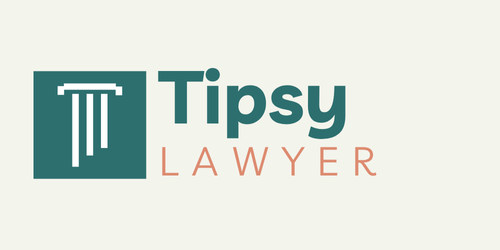When evaluating professional services, a well-maintained website is a crucial indicator of legitimacy and trustworthiness. An unprofessional website may raise concerns, particularly if it features outdated design, broken links, poor grammar, or spelling errors. The absence of essential information, such as comprehensive contact details, can also be problematic.
A reputable business should provide a physical address, phone number, and email address on their website. Limited or suspicious contact information may suggest that the business is not operating professionally. The overall presentation of the website, including image quality, branding consistency, and general appearance, can reflect the service provider’s attention to detail and commitment to their online presence.
In the digital age, a professional website is essential for any credible business. A well-designed site with intuitive navigation, current content, and clear contact information can instill confidence in potential clients. It demonstrates the service provider’s dedication to maintaining a professional image and ensuring a positive user experience.
Easily accessible contact information allows potential clients to reach out with questions or concerns, providing peace of mind. Conversely, an unprofessional website lacking proper contact details may serve as a warning sign, while a polished website with clear contact information can inspire confidence in the service provider’s legitimacy and professionalism.
Key Takeaways
- Unprofessional website and contact information can indicate a lack of legitimacy and professionalism.
- Lack of credentials and accreditations may raise doubts about the expertise and credibility of the service provider.
- Pressure to pay upfront fees without clear explanations or justifications can be a red flag for potential scams or unethical practices.
- Inconsistent or vague communication from the service provider may indicate a lack of transparency or reliability.
- Suspicious reviews and testimonials should be carefully scrutinized as they may be fabricated or manipulated.
- Unwillingness to provide references or case examples may indicate a lack of successful track record or a desire to hide past failures.
- Refusal to sign a retainer agreement can be a sign of potential legal or ethical issues, and should be a cause for concern.
Lack of Credentials and Accreditations
The Risks of Unverified Credentials
When considering hiring a professional service provider, it is crucial to verify their credentials and accreditations. A lack of verifiable credentials can be a major red flag that the service provider may not have the necessary qualifications or expertise to perform the job effectively. This can include missing or outdated certifications, unclear educational background, and absence of professional affiliations.
The Importance of Accreditation
Without these essential credentials, it can be difficult for potential clients to trust that the service provider has the necessary skills and knowledge to deliver high-quality results. Furthermore, the absence of accreditations from reputable organizations or industry associations can also raise doubts about the legitimacy of the service provider. Accreditation from recognized bodies can serve as a validation of the service provider’s expertise and commitment to upholding industry standards and best practices.
Building Trust with Transparency
On the other hand, a service provider with clear and verifiable credentials and accreditations can inspire confidence in potential clients. By showcasing their qualifications, certifications, and affiliations with reputable organizations, the service provider demonstrates their commitment to professionalism and expertise in their field. This transparency can help build trust with potential clients and reassure them that they are working with a qualified and reputable professional.
A Lesson in Credibility
In conclusion, a lack of credentials and accreditations can be a warning sign for potential clients, while a service provider with clear and verifiable qualifications can instill confidence in their expertise and credibility.
Pressure to Pay Upfront Fees

One common red flag when dealing with service providers is pressure to pay upfront fees before any work has been completed. This can include demands for full payment in advance or insistence on large deposits before any services are rendered. Such pressure tactics can be indicative of unscrupulous business practices and may signal that the service provider is more interested in securing payment than delivering quality results.
Additionally, paying upfront fees without any guarantee of satisfactory service can leave clients vulnerable to potential scams or subpar work. Moreover, legitimate service providers typically offer transparent payment terms and may require a deposit or partial payment to secure their services. However, they should be willing to provide clear contracts or agreements outlining the scope of work, deliverables, and payment schedule.
Any pressure to pay upfront fees without such documentation can be cause for concern. Conversely, reputable service providers understand the importance of building trust with their clients and are willing to discuss payment terms openly and honestly. They may require deposits or partial payments as part of their standard business practices but should be willing to provide clear contracts or agreements outlining the terms and conditions.
By being transparent about payment expectations and offering clear documentation, trustworthy service providers can demonstrate their commitment to delivering quality work and building long-term client relationships. In conclusion, pressure to pay upfront fees without clear documentation can be a red flag for potential clients, while transparent payment terms and clear agreements can indicate a trustworthy and professional service provider.
Inconsistent or Vague Communication
| Communication Issue | Frequency | Impact |
|---|---|---|
| Inconsistent messaging | High | Confusion among team members |
| Vague instructions | Medium | Delays in project completion |
| Unclear expectations | High | Decreased productivity |
Another warning sign when dealing with service providers is inconsistent or vague communication. This can include delayed responses to inquiries, unclear answers to questions, and frequent changes in communication methods. Poor communication practices can be indicative of disorganization or lack of commitment on the part of the service provider.
Additionally, vague or evasive responses to important questions may suggest that the service provider is not being transparent or forthcoming about their services. Furthermore, inconsistent communication can lead to misunderstandings and delays in project timelines, which can ultimately impact the quality of the work being delivered. Clients rely on clear and timely communication from their service providers to ensure that their needs are being met and that expectations are being managed effectively.
Therefore, any signs of inconsistent or vague communication should be taken seriously as potential red flags. Conversely, reliable service providers understand the importance of clear and consistent communication with their clients. They prioritize responsiveness and transparency in their interactions and strive to keep clients informed at every stage of the project.
By maintaining open lines of communication and providing clear and detailed information, trustworthy service providers can build trust with their clients and demonstrate their commitment to delivering high-quality work. In conclusion, inconsistent or vague communication from a service provider can be a cause for concern for potential clients, while reliable and transparent communication practices can indicate a professional and trustworthy service provider.
Suspicious Reviews and Testimonials
When evaluating a service provider, it is important to consider the reviews and testimonials from previous clients as they can provide valuable insights into the quality of their work and customer satisfaction. However, suspicious reviews or testimonials that seem overly positive or lack specific details can be a red flag for potential clients. These reviews may be fabricated or manipulated by the service provider to create a false impression of their capabilities.
Additionally, an absence of reviews or testimonials altogether can also raise doubts about the legitimacy of the service provider. A lack of feedback from previous clients may indicate that the service provider has little experience or has not delivered satisfactory results in the past. On the other hand, genuine reviews and testimonials from satisfied clients can provide reassurance to potential clients about the quality of the service provider’s work.
Authentic feedback that includes specific details about the services provided and the client’s experience can help build trust and confidence in the service provider’s capabilities. Furthermore, reputable service providers are often transparent about sharing client feedback and may even showcase testimonials on their website or marketing materials as a testament to their track record of success. In conclusion, suspicious reviews or testimonials can be a red flag for potential clients when evaluating a service provider, while genuine feedback from satisfied clients can provide valuable insights into the quality of their work.
Unwillingness to Provide References or Case Examples

Red Flag: Unwillingness to Provide References
When considering a service provider, one warning sign to look out for is their reluctance to provide references or case examples from previous work. A legitimate and reputable service provider should be willing to share examples of their past projects or connect potential clients with previous customers who can vouch for their work. Any resistance to providing such references may indicate that the service provider has something to hide or lacks confidence in their ability to deliver satisfactory results.
The Importance of Transparency
Without access to references or case examples, potential clients may struggle to assess the quality of the service provider’s work and make an informed decision about whether to engage their services. On the other hand, trustworthy service providers understand the importance of transparency and are willing to provide references or case examples upon request. They may even proactively showcase their past work on their website or marketing materials as a way to demonstrate their expertise and track record of success.
Building Trust and Confidence
By being open about sharing examples of their work and connecting potential clients with satisfied customers, reputable service providers can build trust and confidence in their capabilities. This transparency can help potential clients feel more comfortable and confident in their decision to work with the service provider.
A Key Indicator of Trustworthiness
In conclusion, an unwillingness to provide references or case examples can be a red flag for potential clients when evaluating a service provider, while transparency in sharing past work can indicate a trustworthy and reputable professional.
Refusal to Sign a Retainer Agreement
When engaging a service provider for ongoing work or long-term projects, it is essential to have a clear retainer agreement in place that outlines the scope of work, deliverables, payment terms, and other important details. A refusal by the service provider to sign such an agreement can be a major red flag for potential clients. Without a formal contract in place, there is little protection for both parties in case of disputes or misunderstandings.
Furthermore, an unwillingness to sign a retainer agreement may indicate that the service provider is not committed to upholding professional standards or may have something to hide regarding their business practices. Conversely, reputable service providers understand the importance of formalizing their working relationship with clients through clear retainer agreements. They are willing to discuss and negotiate terms that are fair and beneficial for both parties before commencing any work.
By signing a retainer agreement, both parties have a clear understanding of their rights and responsibilities, which helps prevent misunderstandings and disputes down the line. In conclusion, a refusal by a service provider to sign a retainer agreement can be a red flag for potential clients when engaging their services, while willingness to formalize the working relationship through clear agreements can indicate professionalism and reliability.
If you’re looking for more information on spotting a fake law firm, you may want to check out this article on family law from Tipsy Lawyer. It provides valuable insights into the legal industry and can help you identify red flags when searching for a reputable law firm. (source)
FAQs
What are some red flags to look for when trying to spot a fake law firm?
Some red flags to look for when trying to spot a fake law firm include: lack of a physical office, no online presence or website, no verifiable credentials or bar association membership, and requests for payment upfront without providing any services.
How can I verify the credentials of a law firm?
You can verify the credentials of a law firm by checking with the state bar association to ensure the firm is licensed to practice law in your state. You can also look for reviews and testimonials from previous clients, and check for any disciplinary actions or complaints against the firm.
What should I do if I suspect a law firm is fake?
If you suspect a law firm is fake, you should report your suspicions to the state bar association and any other relevant authorities. You should also cease any communication or transactions with the firm and seek legal advice from a reputable and licensed law firm.
Are there any resources available to help me spot a fake law firm?
Yes, there are resources available to help you spot a fake law firm. You can check with the state bar association, legal directories, and online reviews to verify the legitimacy of a law firm. Additionally, there are consumer protection agencies and legal aid organizations that can provide guidance and assistance in identifying fake law firms.














